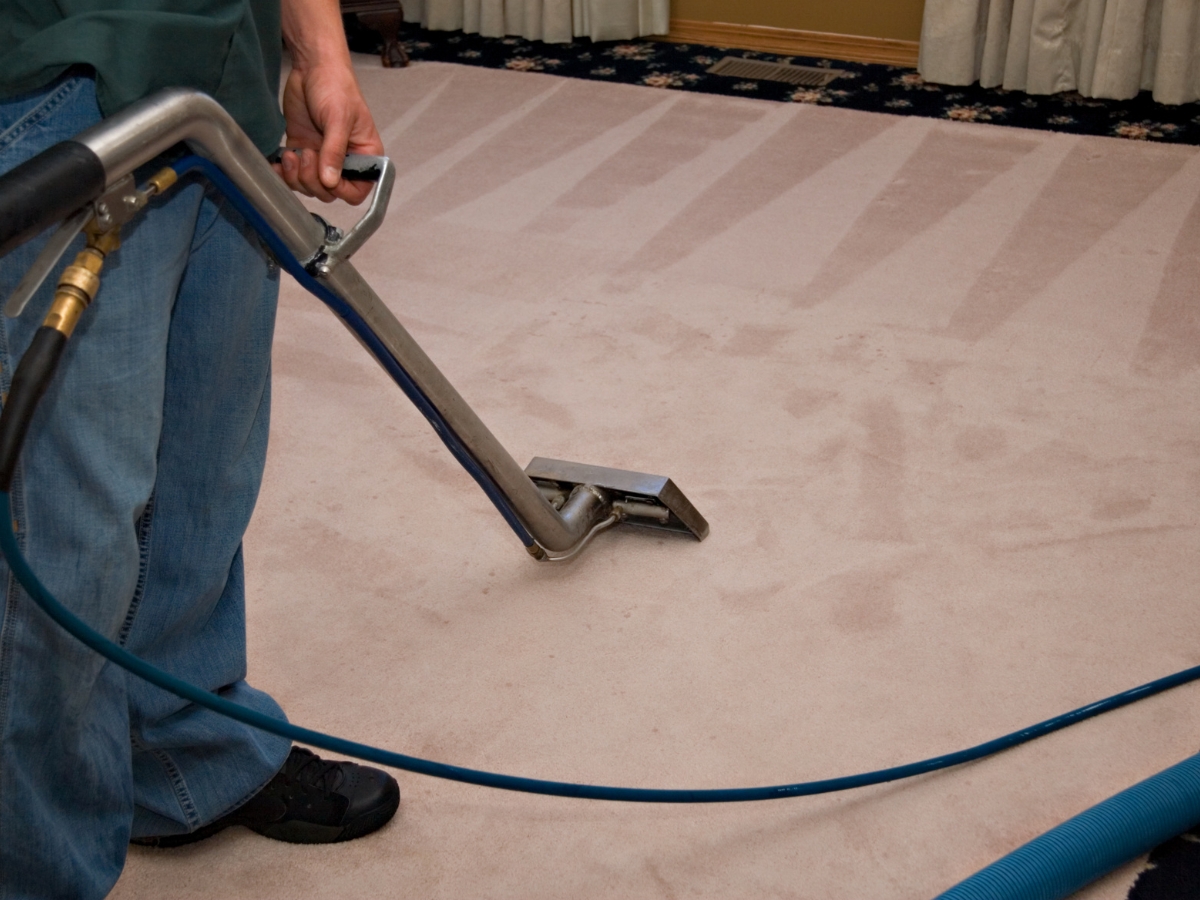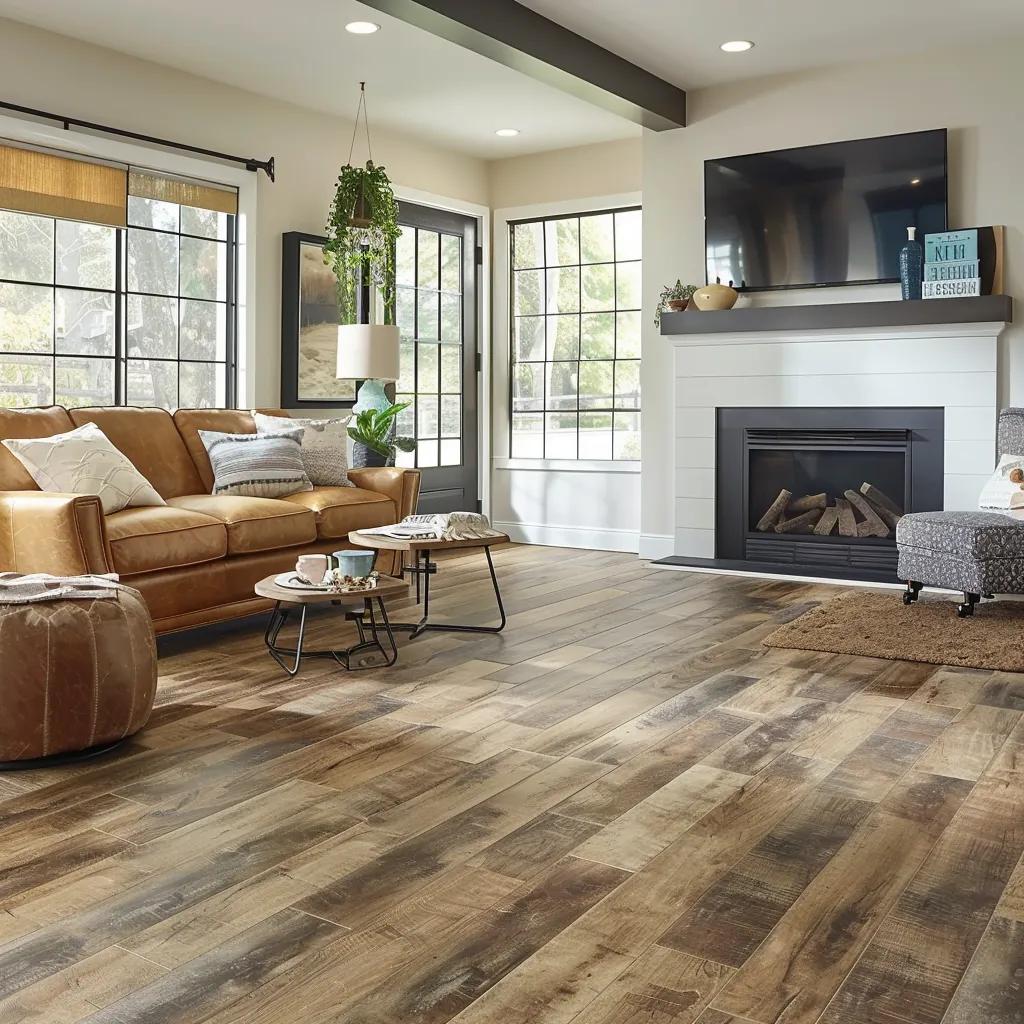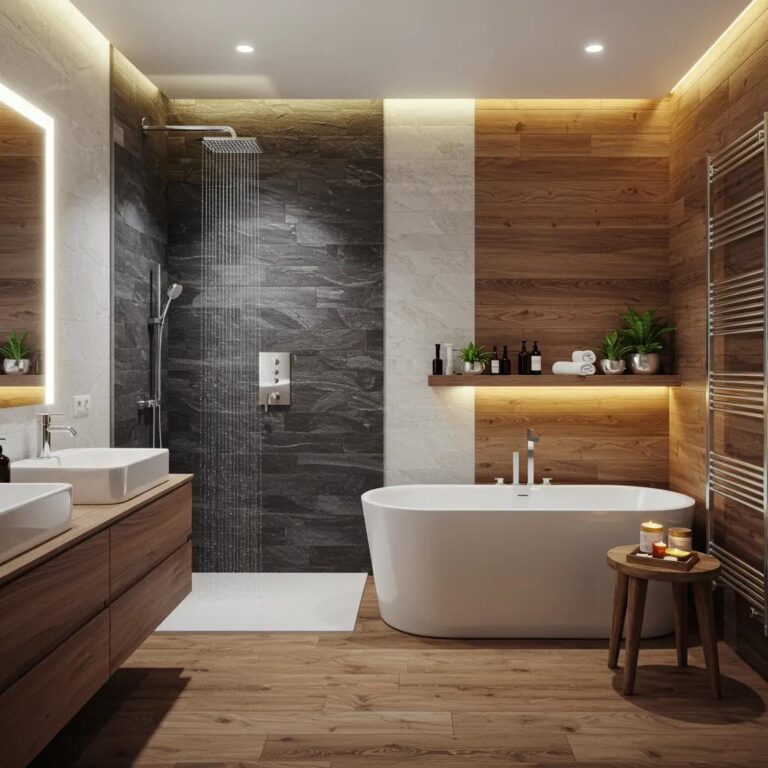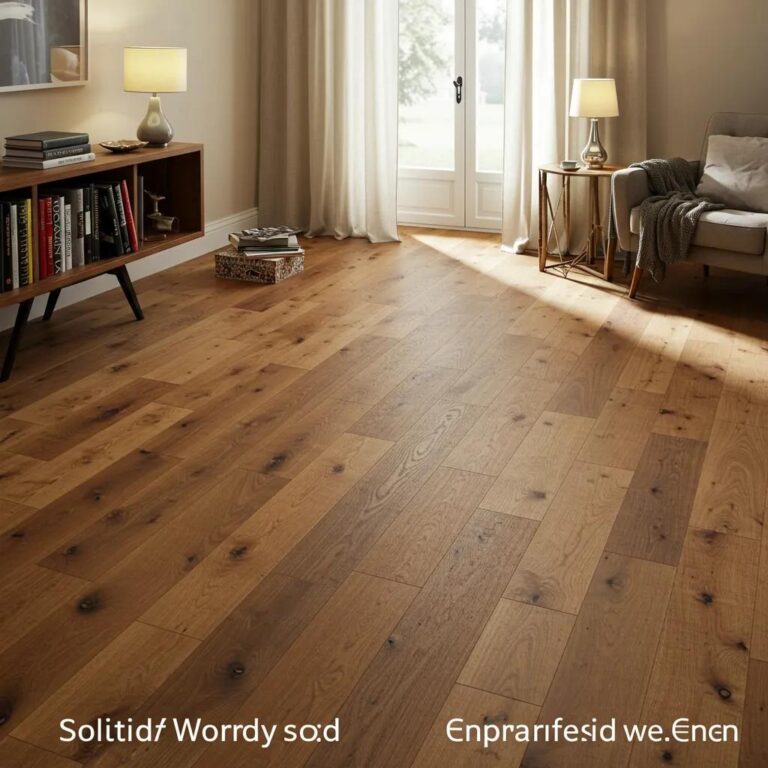As we look ahead to 2025, bathroom remodeling is shifting toward personalized wellness, sustainable design, and smart technology that transforms daily routines into luxurious experiences. Homeowners are moving beyond purely aesthetic updates to create holistic retreats featuring integrated voice-activated controls, spa-like wet rooms, and eco-conscious materials that reduce environmental impact without sacrificing style. In this guide, we’ll explore the top bathroom remodeling trends for 2025—from bold terrazzo patterns and matte black fixtures to health-focused features like chromotherapy lighting and heated surfaces—helping you design a space that’s both timeless and ahead of the curve.
Bathroom Remodeling Trends for 2025 to Elevate Your Space
What Are the Leading Bathroom Design Trends for 2025?
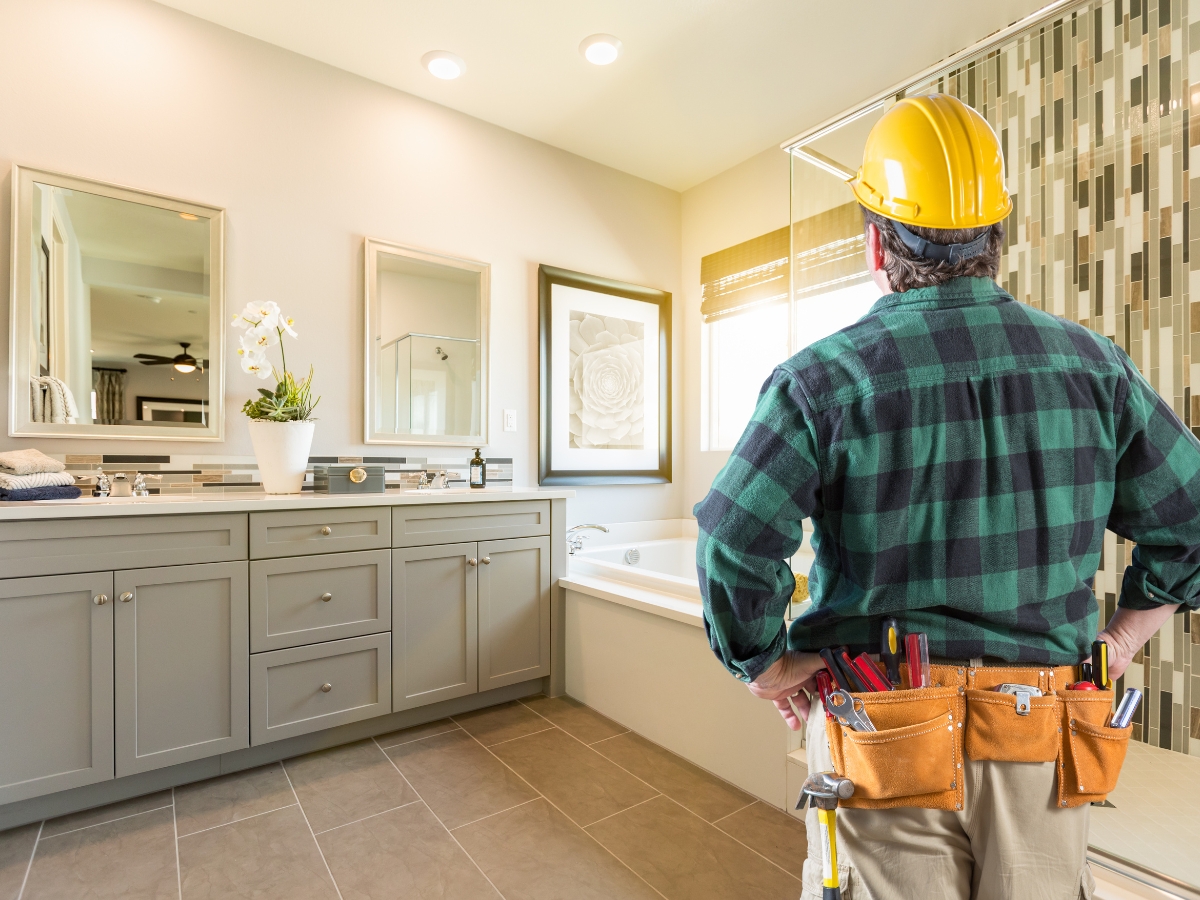
Bathroom remodeling trends for 2025 center on wellness, sustainability, and technology that enhances daily comfort while increasing long-term value. Homeowners are leaning toward functional luxury—designs that feel relaxing but remain practical for everyday use. These trends also reflect a growing focus on eco-conscious materials and smart systems that fit seamlessly into modern living.
Spa-inspired layouts are leading the way, transforming bathrooms into calm, restorative spaces. Natural textures, layered lighting, and sensory details like rainfall showers or soaking tubs make the space feel like a personal retreat. Sustainability continues to gain momentum, with water-saving fixtures, low-VOC finishes, and durable materials that minimize environmental impact. Smart technology is another major influence, as homeowners embrace touchless faucets, heated floors, and lighting that adjusts to mood or time of day.
Open, minimalist designs are also in demand, with floating vanities and concealed storage improving both function and aesthetics. Walk-in showers and wet rooms add accessibility and visual continuity, especially in smaller homes where space is limited. Bold tile patterns, natural stone, and warm metal finishes bring depth and individuality, reflecting the balance between timeless and trend-forward design.
How Are Spa-Like Features Transforming Bathrooms in 2025?
Spa-like features are redefining what homeowners expect from a bathroom remodel. These designs go beyond aesthetics to support wellness and relaxation through thoughtful details that enhance the senses. Steam showers, rainfall heads, and deep soaking tubs help reduce stress, while ambient lighting and sound integration create a calm atmosphere. The result is a bathroom that functions as both a daily necessity and a place for recovery and reflection.
When incorporating spa features, it’s important to consider ventilation and water management to protect finishes and prevent mold growth. Proper planning ensures that these luxury elements perform efficiently without adding unnecessary maintenance. The growing popularity of these features shows that comfort and practicality can coexist when approached with good design and technical coordination.
Why Is Sustainability Essential in Modern Bathroom Remodels?
Sustainability has become a defining part of bathroom remodeling for 2025, driven by both environmental responsibility and long-term cost savings. Water-efficient fixtures like low-flow showerheads and dual-flush toilets reduce utility bills while maintaining comfort. Recycled materials, such as glass countertops and reclaimed wood accents, add character and durability without increasing the carbon footprint.
For homes in humid climates like Atlanta, sustainable choices also extend the life of the remodel. Materials such as porcelain tile, engineered wood, and low-VOC paints resist moisture damage and maintain air quality. Homeowners are prioritizing options that deliver performance, longevity, and style all at once.
What Smart Bathroom Technologies Are Trending in 2025?
Smart technology is now a staple in bathroom remodeling trends for 2025, combining convenience with efficiency. Smart mirrors with built-in lighting and defogging features simplify morning routines, while touchless faucets improve hygiene and reduce water waste. Temperature-controlled showers let users preset their preferences for comfort and energy savings.
These systems can be as simple as plug-in upgrades or as advanced as fully integrated home automation. When paired with sustainable design, they create bathrooms that are not only beautiful but also responsive, efficient, and adaptable. Together, these innovations reflect how technology is reshaping the way homeowners experience one of the most personal spaces in the home.
How Do Floating Vanities and Minimalist Designs Enhance Bathroom Spaces?

Floating vanities and minimalist layouts have become defining features of bathroom remodeling trends for 2025. These designs create a clean, open look while maximizing both function and style. Floating vanities, which are mounted to the wall rather than the floor, open up visible floor space and make even small bathrooms feel larger. They also allow flooring materials to run continuously beneath the cabinetry, creating a seamless and modern aesthetic.
Minimalist bathroom design complements this approach by focusing on simplicity and efficiency. Concealed storage, subtle color palettes, and sleek fixtures reduce clutter and enhance the sense of calm. Together, floating vanities and minimalist layouts make cleaning easier, improve organization, and create a contemporary look that remains timeless. When planning for this style, it’s important to consider plumbing adjustments and wall reinforcement to ensure the vanity is properly supported and functional.
What Are the Benefits of Floating Vanities for Small and Large Bathrooms?
Floating vanities work well in bathrooms of all sizes, offering distinct advantages depending on the layout. In smaller bathrooms, the open space beneath the vanity gives the illusion of more room and makes it easier to clean the floor. This visual lift helps compact spaces feel less confined while maintaining full functionality. For larger bathrooms, floating vanities serve as a visual anchor and can be paired with multiple sinks, storage modules, or mirrors to define specific zones within the space.
Material selection is key to durability and longevity, especially in humid regions like Atlanta. Moisture-resistant laminates, sealed veneers, or solid-surface materials help prevent swelling or warping over time. Coordinating the vanity installation with plumbing and electrical planning also prevents costly changes later in the remodel. When properly designed and installed, floating vanities can elevate both the style and usability of a modern bathroom.
How Does Minimalist Design Influence Modern Bathroom Remodeling?
Minimalist design continues to influence bathroom remodeling trends for 2025 by combining simplicity with practicality. It focuses on uncluttered spaces, clean lines, and functional layouts that make daily routines smoother. Recessed storage niches, handle-free drawers, and integrated lighting are common elements that help maintain a streamlined look while providing ample storage.
To keep minimalist spaces from feeling cold or sterile, homeowners are incorporating natural materials such as wood, stone, or matte metal finishes. Warm lighting, soft textures, and subtle contrasts add comfort and depth while preserving the simplicity of the design. The result is a bathroom that feels both modern and inviting—a functional space where every detail serves a purpose.
Floating vanities and minimalist design together represent the perfect balance between beauty and practicality. As these bathroom remodeling trends for 2025 continue to evolve, they demonstrate that simplicity, when executed thoughtfully, can achieve both elegance and long-term usability.
Why Are Wet Rooms and Walk-In Showers Gaining Popularity in 2025?

Wet rooms and walk-in showers are among the most influential bathroom remodeling trends for 2025, driven by a growing demand for accessibility, modern style, and efficient use of space. These designs create an open, seamless look that makes bathrooms feel larger and more luxurious while offering practical benefits for users of all ages. A wet room is a fully waterproofed area where the entire floor serves as the shower space, while a walk-in shower eliminates the traditional curb for easy, barrier-free access.
Both designs reflect the broader shift toward functionality and inclusivity in home design. They are especially appealing for homeowners planning to age in place, as curbless entries and open layouts improve safety and mobility. Beyond accessibility, wet rooms and walk-in showers provide a sleek, spa-like aesthetic that aligns with the minimalist styles gaining traction in 2025. However, achieving this look requires precise waterproofing and drainage work to prevent long-term moisture damage. Proper slope, integrated drainage, and high-quality waterproof membranes are essential for a durable, leak-free installation.
A well-designed wet room combines beauty and practicality through thoughtful material selection and expert construction. Non-slip floor finishes, durable grout, and high-performance sealants help protect against wear and moisture buildup, ensuring longevity. When properly planned and installed, these elements create a low-maintenance environment that is both stylish and highly functional.
How Do Walk-In Showers Improve Bathroom Accessibility and Style?
Walk-in showers have become a defining feature of modern bathroom design because they blend universal accessibility with clean, contemporary appeal. By removing barriers and curbs, they make bathrooms safer and easier to navigate for users of all mobility levels. The open layout also provides flexibility for features like built-in benches, recessed shelving, or grab bars that enhance comfort without disrupting the aesthetic.
From a design standpoint, walk-in showers align perfectly with the trend toward minimalism and open-concept layouts. The use of continuous tile flooring and frameless glass panels creates a sense of flow and openness, allowing natural light to spread throughout the space. Homeowners can also personalize their shower areas with accent walls, textured tiles, or matte black fixtures to achieve a balance of function and style.
While converting an existing bathroom into a walk-in design can require some construction adjustments, such as reworking the subfloor and upgrading waterproofing systems, the payoff is significant. The finished result not only elevates visual appeal but also increases property value and long-term usability.
As bathroom remodeling trends for 2025 continue to evolve, wet rooms and walk-in showers stand out as practical investments that combine design innovation with lasting comfort. Their focus on accessibility, durability, and effortless elegance ensures they will remain a preferred choice for homeowners well beyond the coming year. Thoughtful choices balance practical accessibility upgrades with high-end finishes to preserve resale value.
How Can Biophilic Design Bring Nature Indoors in Bathroom Remodels?
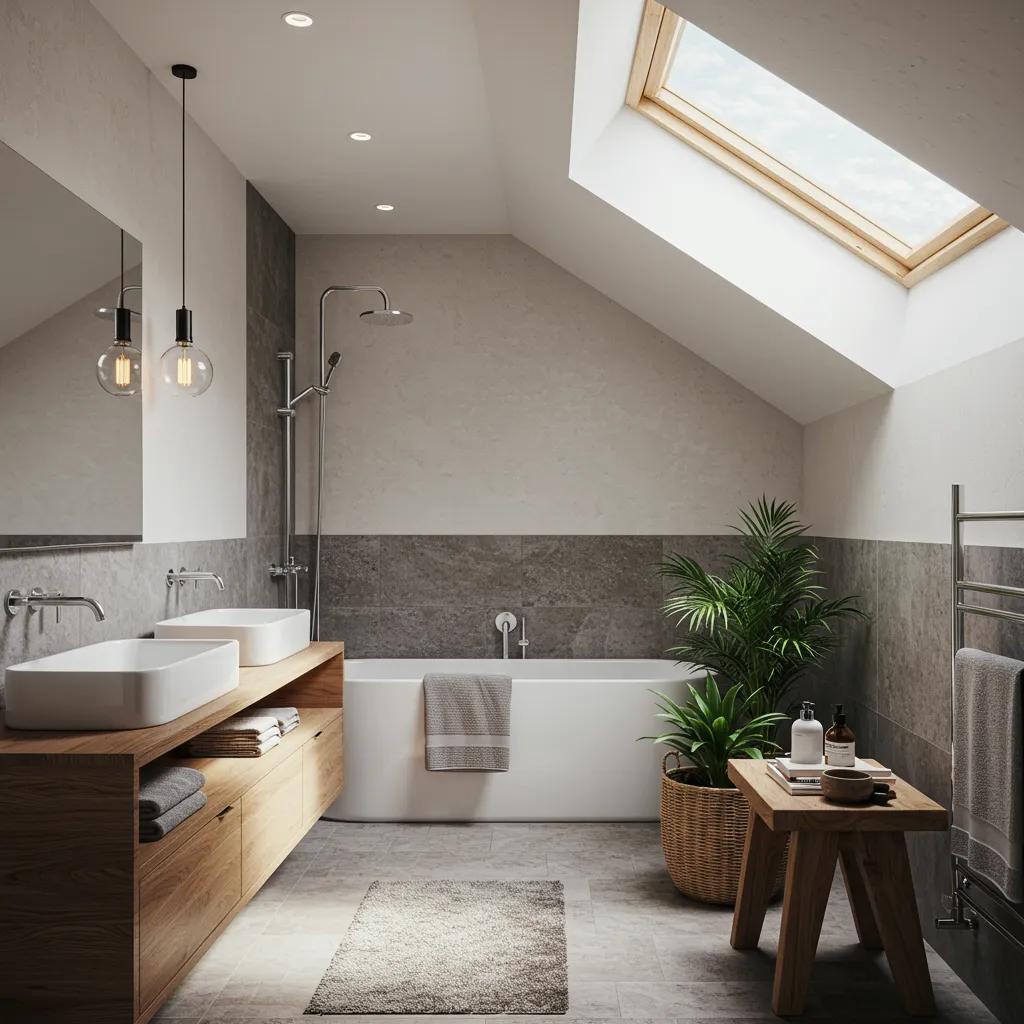
Biophilic design is one of the standout bathroom remodeling trends for 2025, blending natural elements with modern design to create spaces that feel calm, restorative, and connected to the outdoors. This approach introduces materials, textures, and lighting that evoke the natural world while supporting comfort and durability in a humid environment.
Incorporating wood-look tiles, stone surfaces, and strategically placed greenery brings visual warmth and tactile interest to the space. Skylights, large windows, or soft daylighting expand the sense of openness, making the bathroom feel both spacious and soothing. Because moisture is a key factor in bathroom design, materials such as sealed wood, composite stone, and engineered surfaces are popular for their ability to handle humidity without losing their organic appeal. Plants that thrive in damp conditions, like ferns or peace lilies, add vibrancy while purifying the air. Together, these choices form a natural balance that aligns with both wellness and sustainability goals.
What Natural Materials and Features Are Popular in Biophilic Bathrooms?
Natural materials remain central to biophilic bathroom design, but the focus for 2025 is on practicality and longevity. Engineered woods, sealed bamboo, and stone-look porcelain tiles are favored for their durability and ability to withstand moisture. These finishes provide the visual warmth of organic materials while meeting modern maintenance needs. Stone or quartz countertops, paired with matte metal fixtures, give the space an earthy yet refined look.
Natural light also plays a critical role. Skylights and clerestory windows help regulate circadian rhythm and bring a soft, diffused glow that complements both cool and warm palettes. Greenery can be integrated through vertical gardens, wall planters, or subtle shelf accents to maintain balance without cluttering the room. When selected carefully, these materials and design features help homeowners achieve the calming, timeless atmosphere that defines biophilic spaces.
How Does Biophilic Design Enhance Bathroom Ambiance and Comfort?
Biophilic design enhances ambiance by combining organic textures, natural light, and greenery to create an environment that promotes relaxation and well-being. The sensory layering of materials—smooth stone, warm wood tones, and gentle lighting—adds depth and comfort to the space. Even small details, such as a textured wall tile or a built-in plant ledge, can dramatically shift how the room feels.
The key to effective biophilic design is balance. Too many natural elements can feel cluttered, while too few may fail to achieve the intended connection to nature. When integrated with other bathroom remodeling trends for 2025, such as minimalist layouts and spa-like features, biophilic elements elevate both the atmosphere and the overall experience. The result is a bathroom that feels more like a retreat—a space designed not just for routine, but for restoration and daily calm.
What Bold Colors, Tiles, and Lighting Trends Define 2025 Bathrooms?

Bold colors, textured tiles, and layered lighting are leading bathroom remodeling trends for 2025, bringing character and precision to modern spaces. Deep, saturated tones such as navy, forest green, and warm browns are being used to anchor vanities, accent walls, and feature tiles. These rich hues balance the clean lines seen in minimalist and spa-inspired designs. Metal finishes are more diverse this year, with designers mixing matte black, brushed gold, and champagne tones to add depth and contrast.
Tile trends continue to move toward tactile and expressive surfaces. Large-format porcelain tiles create a seamless, low-maintenance foundation, while handcrafted Zellige and patterned tiles add variation and texture. The combination of smooth and irregular surfaces allows light to play across the room, giving each bathroom a more dynamic appearance. Complementing these finishes, layered lighting ties the entire design together. Strategic placement of ambient, task, and accent lighting enhances functionality and creates a balanced, inviting atmosphere.
Which Color Palettes and Fixture Finishes Are Trending in 2025?
Color trends for 2025 lean toward grounded, natural tones with an emphasis on richness and contrast. Deep navy paired with brass or champagne fixtures creates a refined warmth, while charcoal with matte black achieves a bold, contemporary edge. Homeowners are embracing color as a statement feature, often highlighting vanities or walls to add personality without overwhelming the space.
Fixture finishes are moving beyond traditional chrome. Matte black continues to dominate, but brushed gold and warm bronze are becoming equally popular for their ability to complement both cool and warm color schemes. These finishes not only enhance visual appeal but also conceal water spots and fingerprints better than polished metals, making them ideal for everyday use.
What Tile Patterns and Textures Are Making a Statement This Year?
Tile design in 2025 is defined by a mix of scale and craftsmanship. Large-format slabs remain a favorite for creating uninterrupted surfaces that make small bathrooms appear larger, while smaller textured tiles like Zellige or mosaic patterns are used for backsplashes or accent walls to introduce handmade character. The interplay of glossy and matte surfaces adds depth, especially when combined with strategic lighting.
Color variation within tiles is also trending, with tone-on-tone layering that mimics natural stone or aged ceramic. Grout color selection has become a design decision in itself, influencing both the perceived size and maintenance level of the space. Coordinating samples in real light before installation ensures that texture, color, and reflection work together cohesively.
How Does Innovative Lighting Elevate Bathroom Design?
Lighting design has shifted from purely functional to fully integrated. In 2025, layered lighting—task, ambient, and accent—creates both visual balance and purpose-driven illumination. Integrated LED mirrors, dimmable sconces, and under-cabinet strips provide flexibility for everything from grooming to relaxation.
Smart lighting technology is also becoming a key part of bathroom remodeling trends for 2025. Motion sensors, programmable dimmers, and color temperature control improve efficiency and comfort while reducing energy use. Early planning ensures electrical placement supports the overall design, allowing lighting to enhance tile finishes, reflect color palettes, and elevate the bathroom into a cohesive, high-performing space.
Frequently Asked Questions
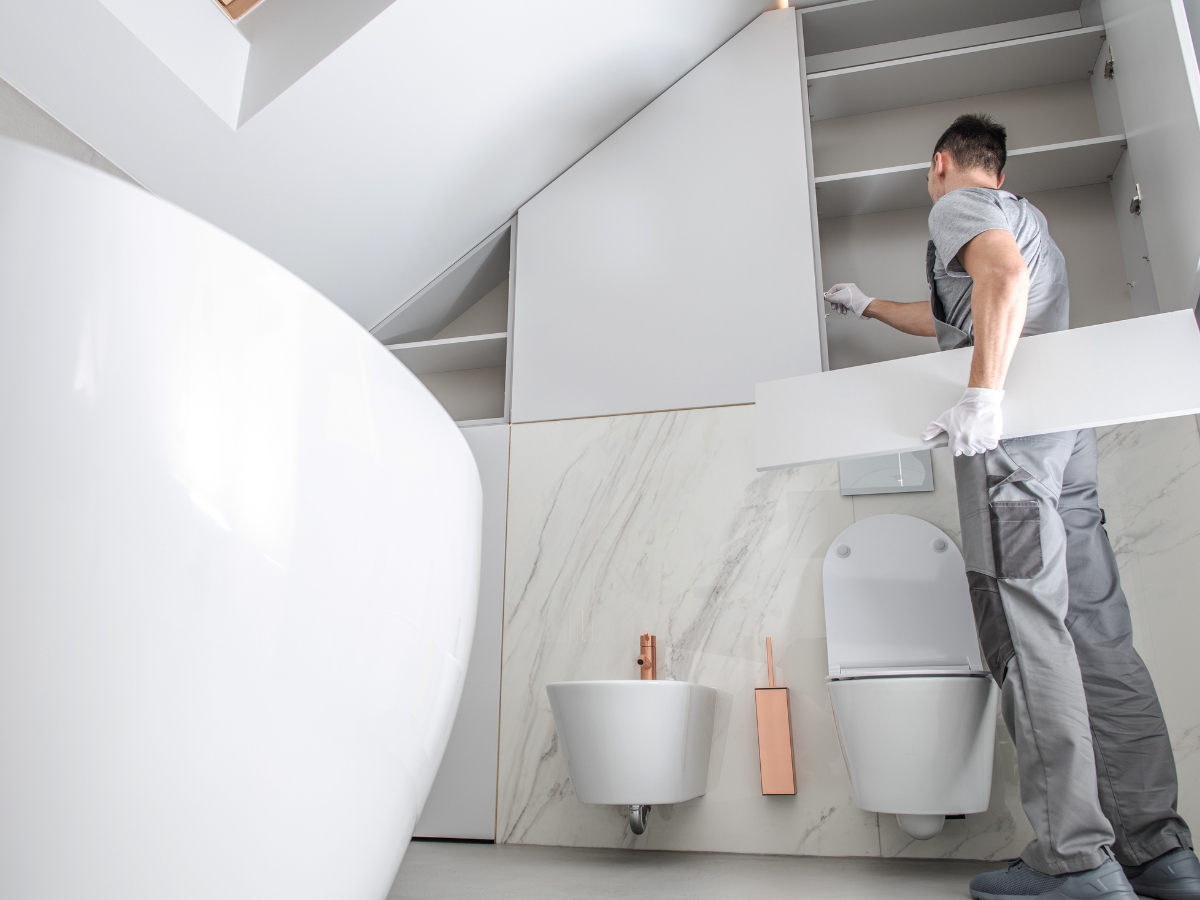
What are the key considerations when planning a bathroom remodel in Atlanta?
When planning a bathroom remodel in Atlanta, you’ll want to consider the local climate, which is humid and can affect material choices. It’s essential to select moisture-resistant materials and fixtures to ensure durability. Additionally, understanding local building codes and regulations is crucial for compliance. Budgeting for both aesthetic upgrades and necessary structural changes, such as plumbing and electrical work, will help you avoid unexpected costs. Consulting with local contractors who are familiar with Atlanta’s specific needs can provide valuable insights and streamline your remodeling process.
How can I ensure my bathroom remodel is eco-friendly?
To ensure your bathroom remodel is eco-friendly, start by selecting sustainable materials, such as recycled glass, low-VOC paints, and water-efficient fixtures. Incorporating energy-saving technologies, like smart lighting and touchless faucets, can further reduce your environmental impact. Additionally, consider using natural materials that are durable and moisture-resistant, which will last longer and require less maintenance. Finally, work with contractors who prioritize sustainable practices and can guide you in making choices that align with your eco-friendly goals.
What are the advantages of hiring a professional for bathroom remodeling?
Hiring a professional for bathroom remodeling offers several advantages, including expertise in design, installation, and compliance with local building codes. Professionals can provide valuable insights into the latest trends and materials, ensuring your remodel is both stylish and functional. They also have access to quality materials and skilled labor, which can lead to a more efficient and higher-quality outcome. Additionally, professionals can help manage your project timeline and budget, reducing the stress often associated with DIY renovations.
How can I incorporate smart technology into my bathroom remodel?
Incorporating smart technology into your bathroom remodel can enhance convenience and efficiency. Start by selecting smart fixtures, such as touchless faucets, temperature-controlled showers, and smart mirrors with integrated lighting. Consider installing a smart home system that allows you to control lighting, temperature, and even music through your smartphone or voice commands. Ensure that your electrical and plumbing systems are compatible with these technologies, and consult with a professional to integrate them seamlessly into your design.
What maintenance should I expect after remodeling my bathroom?
After remodeling your bathroom, maintenance will vary based on the materials and fixtures chosen. Regular cleaning of surfaces, especially in areas prone to moisture, is essential to prevent mold and mildew. For natural materials, such as wood or stone, periodic sealing may be required to maintain their appearance and durability. Additionally, check plumbing fixtures for leaks and ensure that smart technology is updated as needed. Establishing a routine maintenance schedule will help keep your bathroom looking and functioning its best.
What are the costs associated with a bathroom remodel in Atlanta?
The costs of a bathroom remodel in Atlanta can vary widely based on factors such as size, materials, and complexity of the project. On average, you can expect to spend between $10,000 to $30,000 for a mid-range remodel. High-end renovations can exceed $50,000, especially when incorporating luxury features and smart technology. It’s important to create a detailed budget that includes materials, labor, and unexpected expenses. Consulting with local contractors can provide a more accurate estimate tailored to your specific project.
Conclusion
From smart technology and sustainable materials to spa-inspired layouts, the top bathroom trends of 2025 are all about creating a personalized retreat that balances luxury with everyday functionality. At Restor-It, Inc., we bring these innovative designs to life with expert craftsmanship and attention to detail, ensuring your remodel is both beautiful and built to last. Ready to create your dream bathroom? Call (678) 355-6645 or visit our website for a free quote today—and let us help you build a space that’s ahead of its time.




